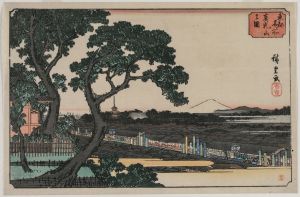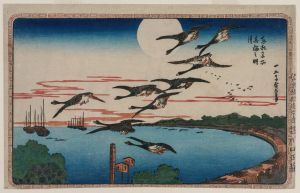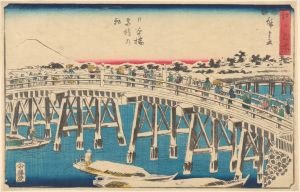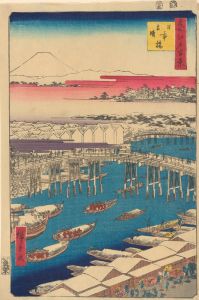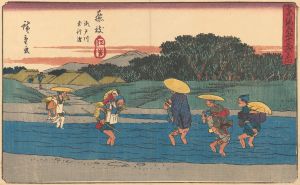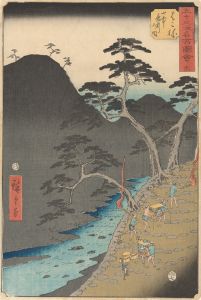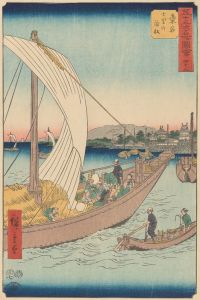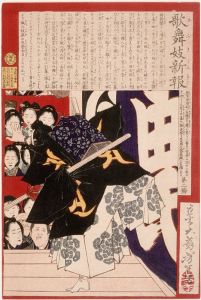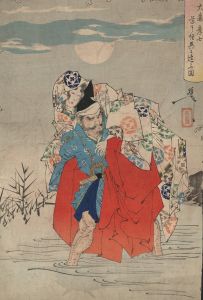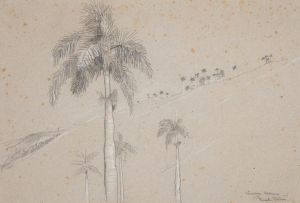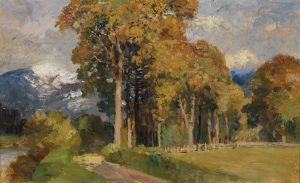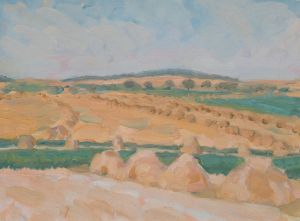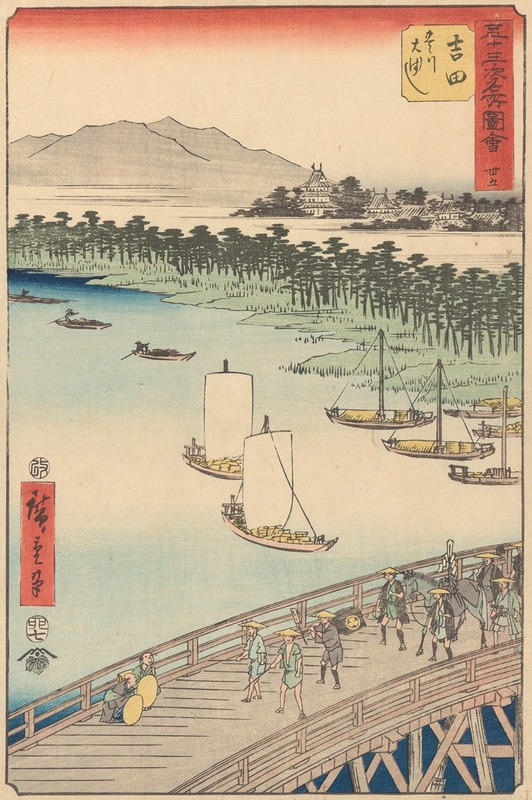
Yoshida
A hand-painted replica of Andō Hiroshige’s masterpiece Yoshida, meticulously crafted by professional artists to capture the true essence of the original. Each piece is created with museum-quality canvas and rare mineral pigments, carefully painted by experienced artists with delicate brushstrokes and rich, layered colors to perfectly recreate the texture of the original artwork. Unlike machine-printed reproductions, this hand-painted version brings the painting to life, infused with the artist’s emotions and skill in every stroke. Whether for personal collection or home decoration, it instantly elevates the artistic atmosphere of any space.
Andō Hiroshige, a renowned Japanese ukiyo-e artist of the Edo period, is celebrated for his landscape prints and series that capture the beauty and essence of Japan's natural scenery. One of his notable works is "Yoshida," which is part of his acclaimed series "The Fifty-three Stations of the Tōkaidō" (Tōkaidō Gojūsan-tsugi no Uchi). This series, created in the early 1830s, depicts the various stations along the Tōkaidō road, a vital route connecting Edo (modern-day Tokyo) to Kyoto.
The "Yoshida" print is the 34th station in the series and is known for its depiction of the Yoshida Bridge, a significant landmark in the area. The Tōkaidō road was a well-traveled path during the Edo period, frequented by travelers, merchants, and samurai. Hiroshige's series captures the diverse landscapes and daily life along this route, offering a glimpse into the cultural and geographical tapestry of Japan during this era.
In the "Yoshida" print, Hiroshige illustrates the bridge spanning the Toyo River, with travelers crossing it. The composition is typical of Hiroshige's style, featuring a harmonious blend of natural elements and human activity. The bridge itself is a focal point, drawing the viewer's eye across the print, while the surrounding landscape, including the river and distant mountains, provides a serene backdrop. Hiroshige's use of color and perspective creates a sense of depth and movement, inviting the viewer to imagine the bustling activity of the travelers and the tranquil beauty of the natural surroundings.
Hiroshige's work is characterized by its attention to detail and ability to convey the atmosphere of a scene. In "Yoshida," the artist captures the essence of travel and the interconnectedness of people and nature. The print reflects the importance of the Tōkaidō road as a conduit for cultural exchange and economic activity during the Edo period. It also highlights Hiroshige's skill in rendering landscapes with a poetic sensibility, a hallmark of his artistic legacy.
"The Fifty-three Stations of the Tōkaidō" series, including the "Yoshida" print, was highly popular in its time and remains influential today. It not only showcases Hiroshige's mastery of the ukiyo-e technique but also serves as a historical document, preserving the visual and cultural heritage of Japan's Edo period. Hiroshige's work has inspired countless artists and continues to be celebrated for its beauty, precision, and evocative power.
Overall, "Yoshida" by Andō Hiroshige is a testament to the artist's ability to capture the spirit of a place and time. Through his meticulous attention to detail and his unique artistic vision, Hiroshige offers viewers a window into the past, allowing them to experience the landscapes and life of Edo-period Japan. His work remains a cherished part of Japan's cultural history and continues to be admired by art enthusiasts around the world.





